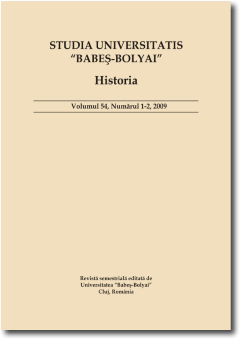AN OFFICIAL PATRON SAINT OF MOLDAVIA? ST. JOHN THE NEW AND THE DYNASTIC SIGNIFICANCE OF HIS CULT IN THE FIFTEENTH AND SIXTEENTH CENTURIES
AN OFFICIAL PATRON SAINT OF MOLDAVIA? ST. JOHN THE NEW AND THE DYNASTIC SIGNIFICANCE OF HIS CULT IN THE FIFTEENTH AND SIXTEENTH CENTURIES
Author(s): Elena FireaSubject(s): History
Published by: Studia Universitatis Babes-Bolyai
Keywords: St. John the New; protector saint of Moldavia; cult of saints; veneration of relics; princely patronage; dynastic motivations.
Summary/Abstract: The paper investigates the evolution of St. John the New’s cult in Moldavia during the first two centuries of its existence, from the perspective of its dynastic implications. Orchestrated on princely initiative, the ceremonial transfer of his relics to Suceava (1415) played the role of a local canonization and marked the starting point of St. John’s veneration as protector saint of the country. However, the evidence suggests that his career as such was neither linear, nor long lasting. By scrutinizing all the available data indicating the direct participation of the political authority in supporting and consolidating St. John’s cult, the analysis points out that he was unequivocally promoted as protector saint of the principality only towards the middle of the sixteenth century. Almost completely ignored until then, the cult had been encouraged only by princes with strong dynastic preoccupations (Alexander the Kind, Stephan the Great, Petru Rareş), which suggest a gradual association of St. John the New with the ruling dynasty. Even if invested with political significance from the beginning, the cult was explicitly exploited for dynastical purposes in Moldavia only towards the end of the sixteenth century. In a time when succession to the throne was no longer confined exclusively to the traditional ruling house, the increasing devotion of princes with dynastical flaws (Peter the Lame or Ieremia Movilă) for the saint’s relics was more and more charged with political significance, publicly affirming their affiliation to the dynasty. For the last Moldavian princes preoccupied with the continuity of the old lineage, the appropriation of St. John’s cult and its ostentatious promotion seem to have been effective in terms of dynastic legitimacy.
Journal: Studia Universitatis Babes-Bolyai - Historia
- Issue Year: 56/2011
- Issue No: 1
- Page Range: 111-134
- Page Count: 24
- Language: English

